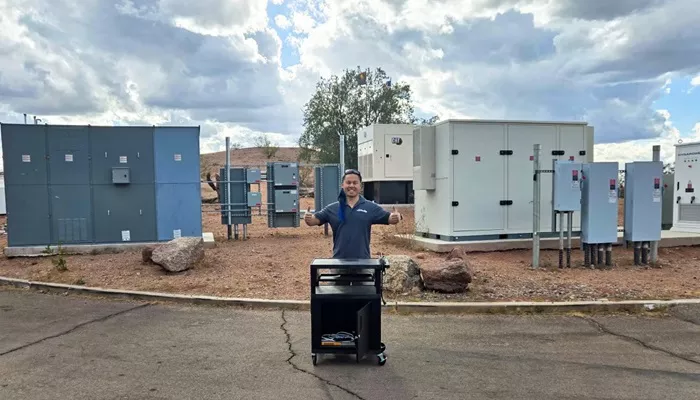As electricity demand continues to rise, the energy sector is pushing for faster innovation and more efficient solutions to keep costs low while maintaining reliability.
Renewable energy is at the forefront of this transition, but integrating it into the existing power grid is not without challenges. Key questions arise, such as: Will adding more renewables affect grid reliability? Can this transition make electricity even more affordable?
A recent study from Arizona State University (ASU) provides clear answers to these questions. The research, part of a project titled Providing Energy Resilience With an ROI, shows that it is possible to achieve both improved reliability and reduced costs through innovative technology.
The results were impressive: utility bills at the demonstration site dropped by 26% to 40%, saving around $1,000 per month. Additionally, there was a 22% improvement in system performance during simulated grid outages. This meant that the site could maintain power for a full day longer compared to relying solely on backup generators.
The breakthrough technology behind these results is called Adaptive Control of Energy Systems (ACES). Developed by ASU’s Laboratory for Energy and Power Solutions (LEAPS), ACES was deployed in collaboration with the Arizona Department of Emergency and Military Affairs (AZ DEMA) at their Papago Park Military Reservation in Phoenix.
“ACES is a smart energy control system that monitors and manages energy usage and storage,” explained James Nelson, director of technology and innovation at LEAPS. “It acts like a brain, directing different energy systems to work together efficiently.”
The project focused on integrating distributed energy resources (DERs)—such as solar panels, batteries, and backup generators—into existing infrastructure. These DERs can generate or store electricity locally, as opposed to traditional power plants that send electricity over long distances.
AZ DEMA was chosen as the demonstration site due to its existing building automation system and microgrid, a localized energy network. ASU enhanced these systems using predictive analytics to automate operations, reduce costs, and boost energy resilience.
According to Randall Handorf, utilities engineering supervisor at AZ DEMA, the results exceeded expectations. “The integration was seamless, and the solution is tailored to our needs. It’s already providing significant cost savings and could inform future designs of smaller, more cost-effective systems.”
The project, which concluded in February 2025, received nearly $600,000 in funding from the U.S. Department of Defense’s Environmental Security Technology Certification Program. Although the project initially targeted military infrastructure, the benefits have broader applications.
As wildfires and extreme weather events continue to threaten power supply, microgrids—like the one tested in this project—are gaining interest from businesses, communities, and institutions as a means to ensure more reliable and resilient power.
Salt River Project (SRP), a major utility company, also supported the ASU initiative. “This work helps us better understand how microgrids interact with our distribution system and what benefits they can offer to our customers,” said Joel Dickinson, senior manager of distribution integration at SRP. “For example, the microgrid demonstrated the ability to reduce peak demand on our system, which can help us optimize the grid’s performance.”
The project also provided valuable real-world experience for ASU students. Arnel Garcesa, who is completing his PhD in systems engineering, worked on software development for the project’s heating, ventilation, and air-conditioning systems. He emphasized the challenges of transitioning from simulations to real-world applications.
“You can model a system in a controlled environment, but once deployed, unexpected variables emerge,” Garcesa said. “The key was maintaining communication across all systems, even if they were managed by different vendors.”
Nathan Johnson, director of LEAPS, noted that the return on investment for the ACES technology is clear. “The cost of implementing the controller technology can be recovered in as little as two years, with substantial savings thereafter.”
Johnson also highlighted the importance of hands-on research experience for students. “This project not only gives students practical skills but also prepares them for leadership roles in industry, teaching them to turn theory into practice, manage projects, and work with government and industry partners.”
ASU’s groundbreaking work in energy innovation is proving that transitioning to a more sustainable and reliable energy future can be both affordable and beneficial.

